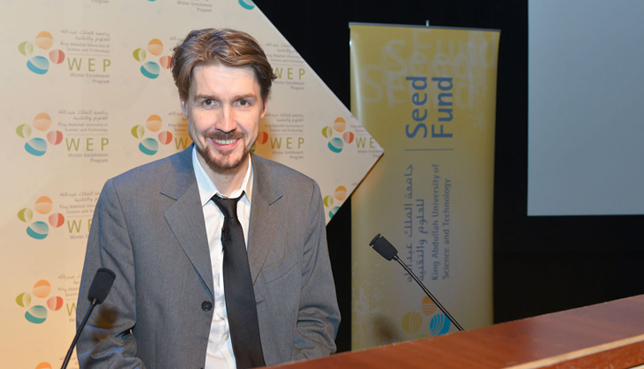WEP 2014: The Importance of Data Visualization

Staffan Landin
"The whole idea is to change the world through increased knowledge and use of global data," said Swedish global development writer and lecturer Staffan Landin during his keynote lecture on the importance of data visualization at the KAUST Winter Enrichment Program (WEP 2014).
In his keynote address entitled, "Is The World Improving? Visualizing Public Data to Understand the World," Landin demonstrated how exciting new ways of presenting publicly available data can help anyone understand the major trends and rapid changes occurring across the globe.
The Gapminder Tool
Using Gapminder, a tool developed by population expert Hans Rosling, Landin showed how information that was "traditionally only interesting to data nerds" can be brought to life with real-time animated visualizations. With Gapminder, a simple time-based animation of World Bank data for infant mortality rates and per-capita income can reveal "an instant understanding of trends in global growth and development that is near-impossible with old ways of displaying data."
Landin also demonstrated the potential for technologies like Gapminder to dispel many of today's most commonly held assumptions and concepts. Using the terms 'industrialized world' and 'developing world,' as an example, Landin demonstrated how such concepts are no longer accurate today. This can be observed by visualizing the rapid GDP growth of a host of developing countries from Vietnam to Brazil. "The data reveals that, in fact, most so-called developing countries are well ahead of where people think they are," said Landin.
Using similar visualizations, Landin went on to dispel a host of other commonly held beliefs, including media claims of a world population boom and the idea that aid in Africa does not work. In each case, Landin was able to use data to create a clear, fact-based rebuttal.
Landin's many Gapfinder visualizations outlined a diverse modern world that is developing quicker than ever before -- with incomes, education, and healthcare improving across the globe.
Future Growth Challenges
However, one final display featuring an even distribution of carbon emissions across the world's nations pointed to the key challenge to sustaining this growth in the future: the global depletion of natural resources.
In response to this trend, Landin pointed to technology and planning as "critical in creating the conditions we will need to grow up together in the way we want without using up the resources of the planet."
It is data visualization, as Landin outlined, that will lead the way to better planning in the decades ahead: "We can now guesstimate what kind of world we think we will have in 20 years and start planning for that, instead of saying 'what should we have done?' in 20 years' time. This is a great advantage to have."

